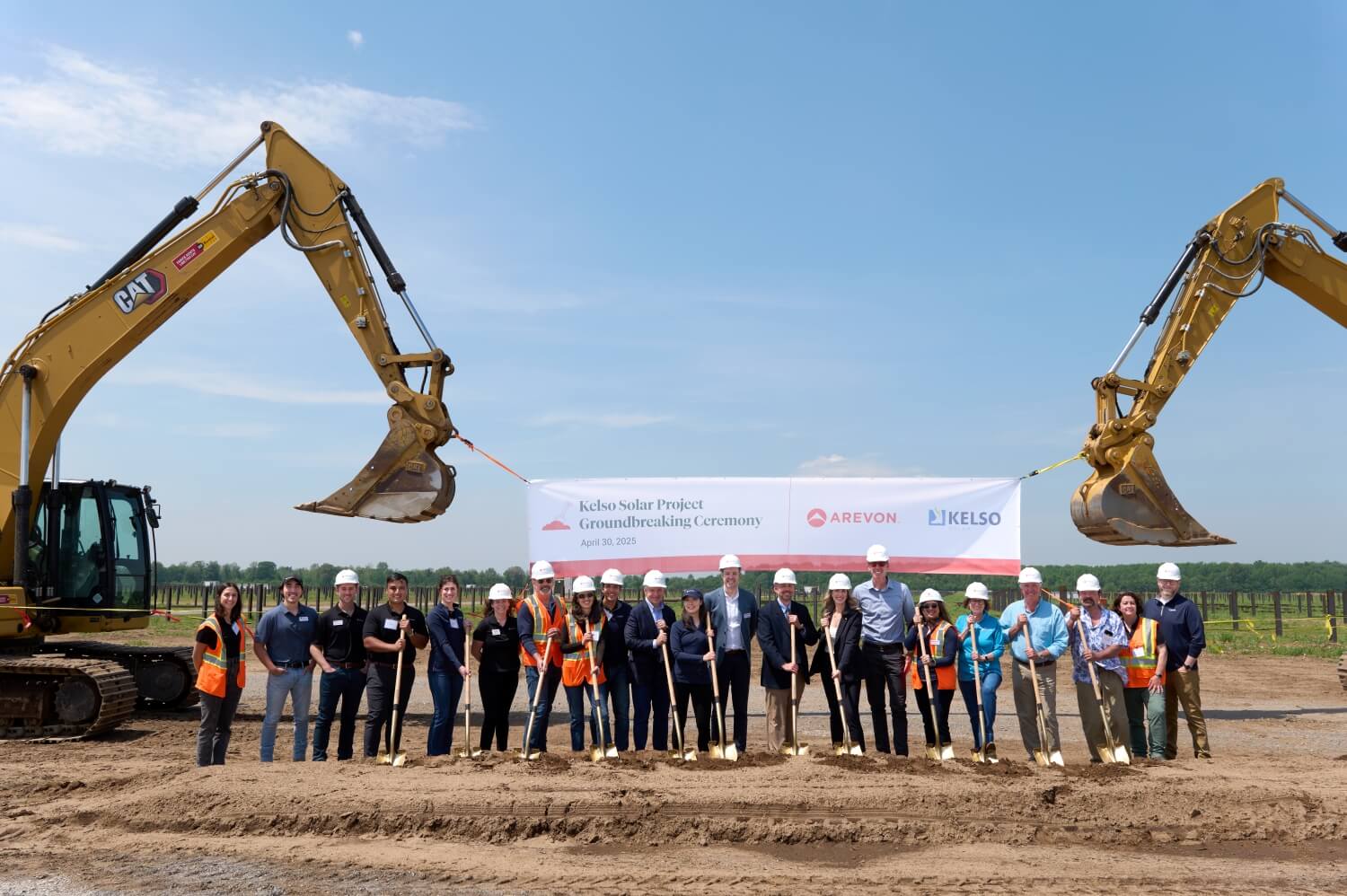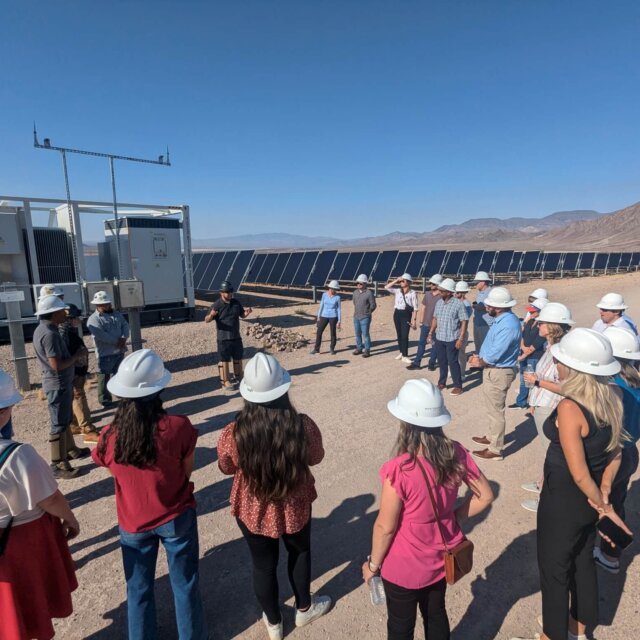Communities
Arevon is an American company committed to supporting the unique needs and goals of each community that is home to our solar and energy storage projects. We own and operate our projects throughout their entire lifecycle, from early stages through multi-decade operations. When Arevon partners with a community to propose a project, we are dedicated to being active participants, cultivating long-term relationships that respect local values. Transparency and community engagement are fundamental pillars of our project development process.

Value for Communities
Testimonials
Hear directly from community members about their experiences partnering with the Arevon team.

“Working in the renewable energy industry is something I am truly proud of because every day we make meaningful contributions toward a greener world. Arevon is an incredible place to grow and learn thanks to the talented individuals who push each other to greater heights. I am very grateful to work at a company that promotes consistent growth and allows me to tackle exciting challenges.”

“Being part of this team is an incredible joy thanks to the unique culture that prioritizes both collaboration and nurturing each employee’s independent growth. I am inspired by my colleagues who help to make work fulfilling, and our generous benefits show that the company truly values its employees. I couldn’t dream of a better place to work.”
“Day-to-day, I feel energized by the Arevon team’s intelligence, ambition, and sense of humor. Looking into the future, I’m proud of my company’s work, as part of the broader renewable energy industry, to create a better, cleaner future for my daughter and her generation.”
“The complexity of this industry attracts creative problem solvers who are always trying to improve the way we do things. I especially love working at Arevon because there are many opportunities to add value, and the people are so supportive. My job is incredibly fulfilling.”
“I love the support that every Arevon team member provides for each other, and I am ecstatic to have so many of my peers as friends, in and out of work. I especially appreciate working for a company that has a leadership team who supports and values my contributions that ultimately go toward delivering clean energy projects that make a positive impact on our country’s infrastructure.”
“Working at Arevon has been an amazing experience because of the people and the supportive, inclusive culture. I’m lucky to be surrounded by such a hardworking and knowledgeable team, especially as the company and the renewable energy industry continues to grow. The benefits and opportunities for growth are unmatched, but it’s the people and the positive environment that truly make it special.”
Arevon in the Community




Communities Frequently Asked Questions
Communities
How do solar projects benefit local communities?
Solar projects provide steady, reliable benefits for their communities:
- Additional revenue into local communities: Solar projects provide an additional source of tax revenue for schools and other local government services, with little demand for public services themselves. Increased tax revenues from solar projects can also have the added benefit of enabling property taxes to remain low for local homeowners. The American Clean Power Association estimates that utility-scale projects currently pay $925 million annually in state and local tax payments and landowner lease payments – and that number is growing each year.
- Increased energy security and reduced energy costs: Solar projects help diversify our energy mix, adding resilience and security to local energy infrastructure, reducing dependence on imported energy sources while driving down electricity costs.
- Improved environmental health: Solar projects generate reliable energy with zero air emissions for healthier communities. Recent studies have found that this is delivering concrete health benefits and avoiding premature mortalities from air pollution. Furthermore, research has demonstrated solar facilities can reduce chemical applications typically used in farming, improve pollinator habitats, reduce nutrient runoff, and retain stormwater compared to other land uses.
- New jobs: Construction of a solar project requires hundreds of on-site jobs over the course of a year or more. Arevon looks to attract local workers or contract with local businesses to support the construction and operation of its solar facilities. The solar industry employs more than 279,000 (and growing!) Americans across the U.S., and the manufacturing industry is increasing production capabilities within the U.S. to support the local supply chain.
How do energy storage projects benefit local communities?
Energy storage brings a number of benefits to communities:
- Minimization of power outages: Energy storage increases grid flexibility and helps provide uninterrupted power — including during extreme weather events.
- Electricity cost reduction: Storing energy when electricity prices are low and then discharging when demand is high increases supply during peak periods as well as helps lower overall costs.
- Grid resiliency: Energy storage enhances reliability, ensuring the seamless delivery of electricity to consumers and businesses especially when they need it most.
- Increased viability of affordable energy: Energy storage enables powering the grid using low-cost renewables, even when the sun is not shining.
- Local economic support: Energy storage projects boost local economies and broaden tax bases. U.S. utility-scale energy storage projects deliver more than $580 million annually to local communities in the form of tax revenue and land lease payments. The rapidly growing industry currently supports more than 75,000 jobs through development, construction, and maintenance of storage facilities.
Does Arevon engage with the community when developing solar and energy storage projects?
Our team works with local citizens and officials to align each solar and energy storage project with the long-term goals and interests of their community. We ensure that our solar projects generate homegrown energy as well as benefit the communities around them.
Giving communities a voice is a pillar of our project development process. As a long-term owner and operator of our projects, Arevon is also committed to the partners and communities we serve from the early stages of a project through to construction and then operations. We have a dedicated Community Relations team who works closely with our neighbors across the full project lifecycle to maximize the positive social impacts of our projects.
Where does the power generated by a solar project go?
The power from a utility-scale solar project will feed into the local grid via preexisting transmission lines and provide a new, sustainable source of energy, enhancing a region’s energy diversification and reliability. Since electricity flows to areas that are closest with energy demand, the power produced at a solar project will likely be used locally or statewide, based on the needs of the region.
What is the benefit to the community if they are not the direct recipients of the electricity?
All solar projects collectively help decarbonize our country’s electric grid, lower our overall electricity costs, and contribute to our nation’s energy independence and security. There are many end users of the electricity that flows from our nation’s electric grids, including both residential and business customers. This is true for electricity generated by fossil fuel plants as well as large-scale solar projects.
The electricity generated by a utility-scale solar project flows and is sold into the local electric grid, exactly the same as a fossil fuel electric plant. A good analogy is water in a pipe. The electricity from a solar project goes into the “water pipe” and mixes with electricity from other sources. Sometimes the electricity is indeed “financially earmarked” for a business customer, but at the end of the day, whomever “opens their faucet” gets a mix of electricity from different sources — unless they are located directly adjacent to a solar project.
Additionally, the local community will be the beneficiary of the increased tax revenues generated by a renewable energy project.
How do solar projects help farmers?
Leasing land for solar development creates a host of benefits for family farms. Financially, rental income creates a predictable, long-term revenue stream that allows family farms to finance growth and plan for succession, keeping land in the family for generations. The revenue provides a diversified income, along with the farming activities on other land owned by the family.
Solar projects can also improve and preserve the health of the land for future agriculture. “Resting” the ground can return it to a better condition at the end of the project’s useful life, similar to fallowed parcels under United States Department of Agriculture’s Conservation Reserve Program.
Solar energy is also critical to mitigating the detrimental effects that climate change is having on America’s farmland. A Stanford University study says climate change has caused a 21% drop in potential farm productivity over the last 60 years.





